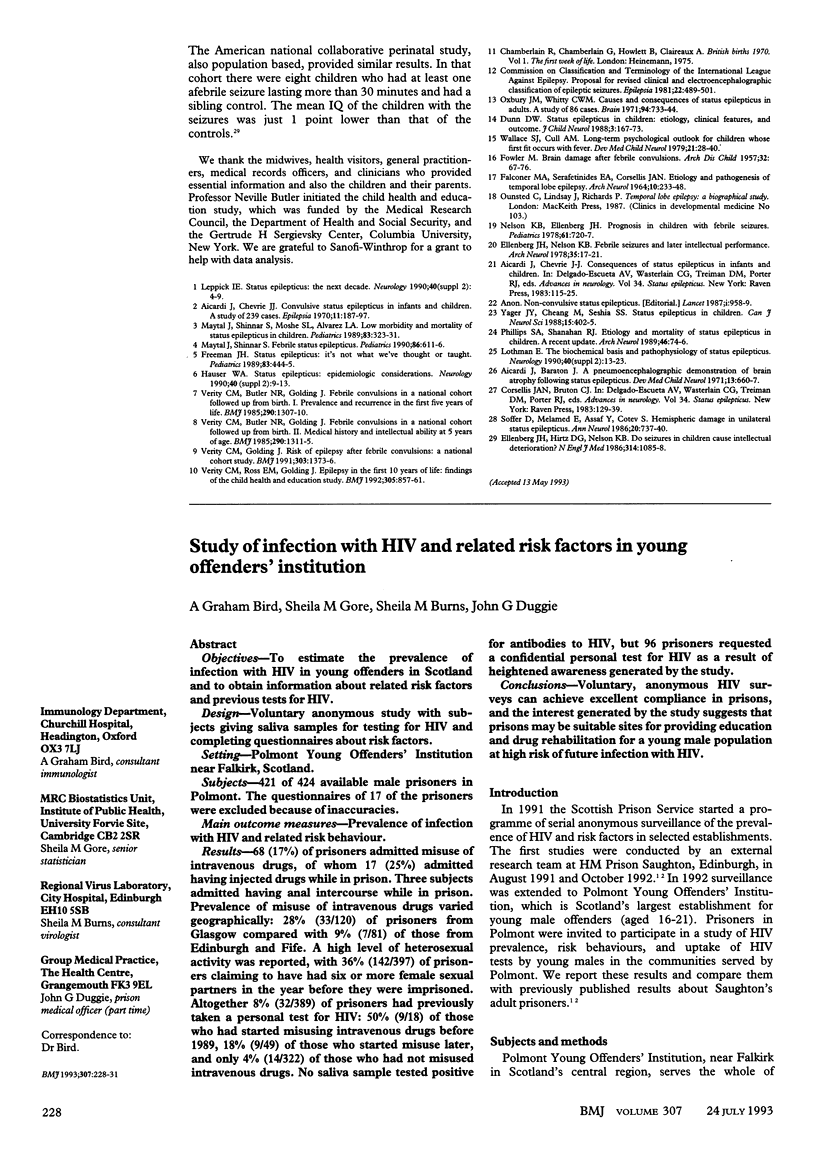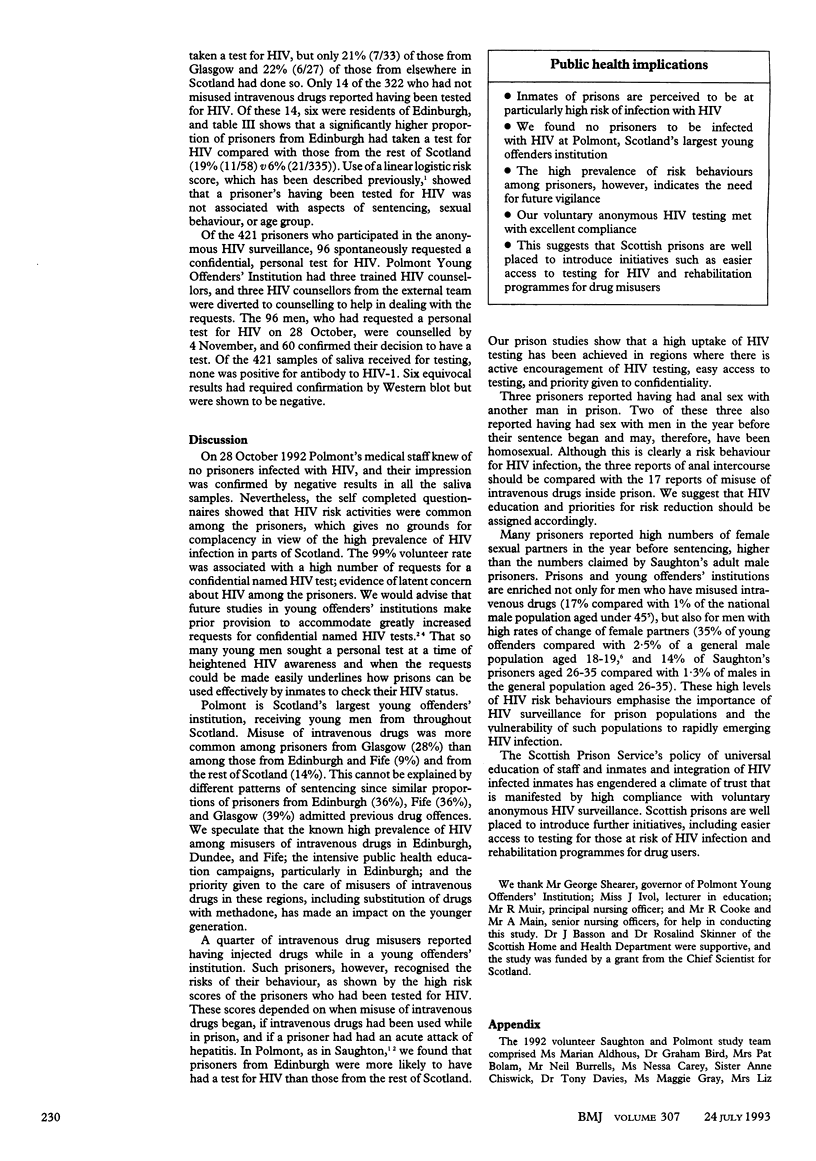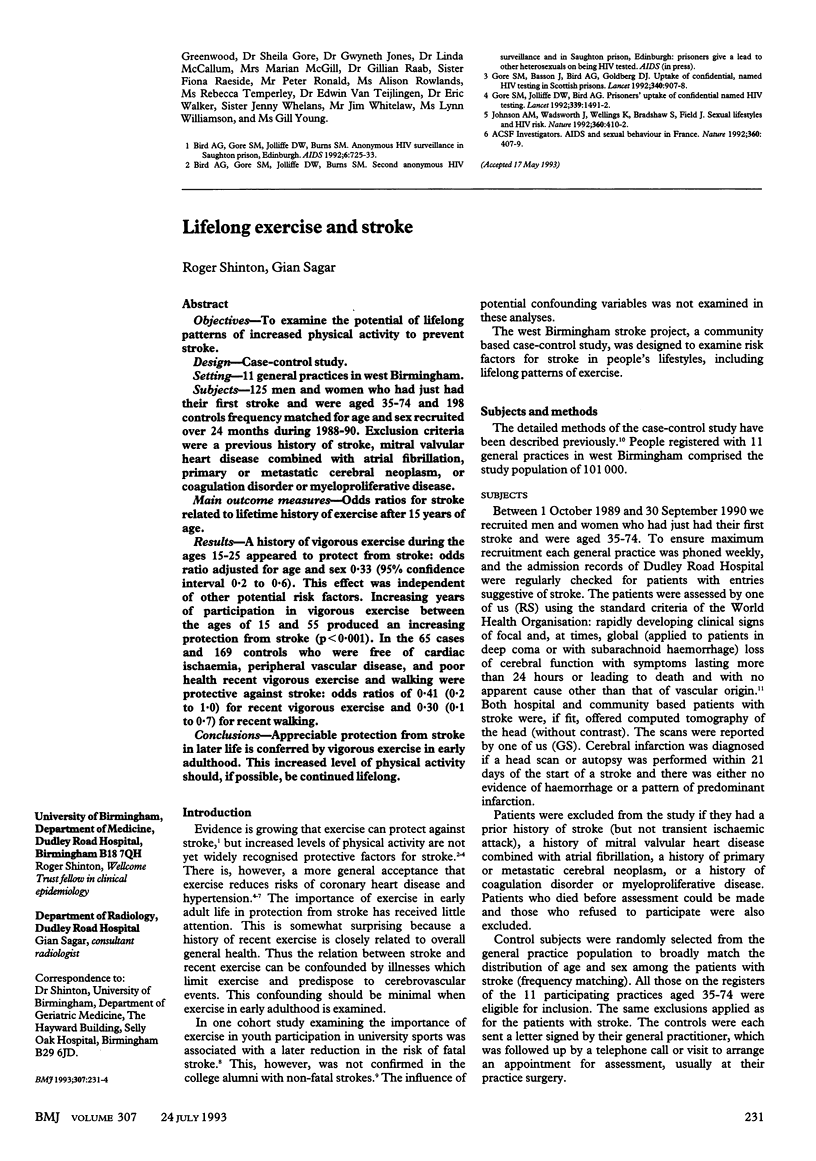Abstract
OBJECTIVES--To estimate the prevalence of infection with HIV in young offenders in Scotland and to obtain information about related risk factors and previous tests for HIV. DESIGN--Voluntary anonymous study with subjects giving saliva samples for testing for HIV and completing questionnaires about risk factors. SETTING--Polmont Young Offenders' Institution near Falkirk, Scotland. SUBJECTS--421 of 424 available male prisoners in Polmont. The questionnaires of 17 of the prisoners were excluded because of inaccuracies. MAIN OUTCOME MEASURES--Prevalence of infection with HIV and related risk behaviour. RESULTS--68 (17%) of prisoners admitted misuse of intravenous drugs, of whom 17 (25%) admitted having injected drugs while in prison. Three subjects admitted having anal intercourse while in prison. Prevalence of misuse of intravenous drugs varied geographically: 28% (33/120) of prisoners from Glasgow compared with 9% (7/81) of those from Edinburgh and Fife. A high level of heterosexual activity was reported, with 36% (142/397) of prisoners claiming to have had six or more female sexual partners in the year before they were imprisoned. Altogether 8% (32/389) of prisoners had previously taken a personal test for HIV: 50% (9/18) of those who had started misusing intravenous drugs before 1989, 18% (9/49) of those who started misuse later, and only 4% (14/322) of those who had not misused intravenous drugs. No saliva sample tested positive for antibodies to HIV, but 96 prisoners requested a confidential personal test for HIV as a result of heightened awareness generated by the study. CONCLUSIONS--Voluntary, anonymous HIV surveys can achieve excellent compliance in prisons, and the interest generated by the study suggests that prisons may be suitable sites for providing education and drug rehabilitation for a young male population at high risk of future infection with HIV.
Full text
PDF



Selected References
These references are in PubMed. This may not be the complete list of references from this article.
- Bird A. G., Gore S. M., Jolliffe D. W., Burns S. M. Anonymous HIV surveillance in Saughton Prison, Edinburgh. AIDS. 1992 Jul;6(7):725–733. doi: 10.1097/00002030-199207000-00017. [DOI] [PubMed] [Google Scholar]
- Gore S. M., Basson J., Bird A. G., Goldberg D. J. Uptake of confidential, named HIV testing in Scottish prisons. Lancet. 1992 Oct 10;340(8824):907–908. doi: 10.1016/0140-6736(92)93313-c. [DOI] [PubMed] [Google Scholar]
- Gore S. M., Jolliffe D. W., Bird A. G. Prisoners' uptake of confidential, named HIV testing. Lancet. 1992 Jun 13;339(8807):1491–1492. doi: 10.1016/0140-6736(92)92098-z. [DOI] [PubMed] [Google Scholar]
- Johnson A. M., Wadsworth J., Wellings K., Bradshaw S., Field J. Sexual lifestyles and HIV risk. Nature. 1992 Dec 3;360(6403):410–412. doi: 10.1038/360410a0. [DOI] [PubMed] [Google Scholar]


